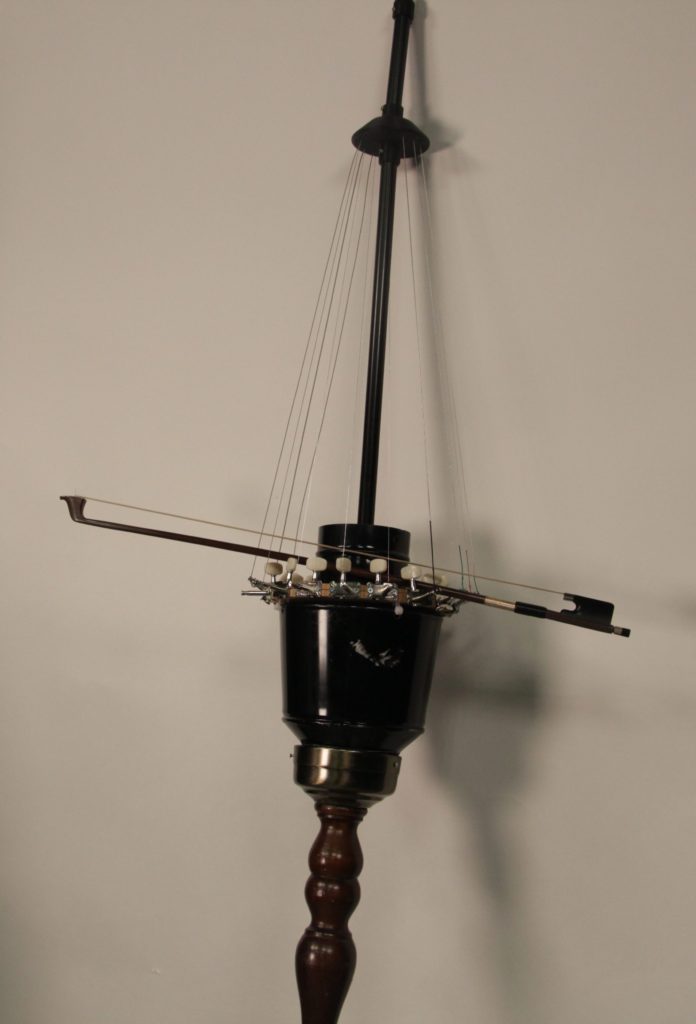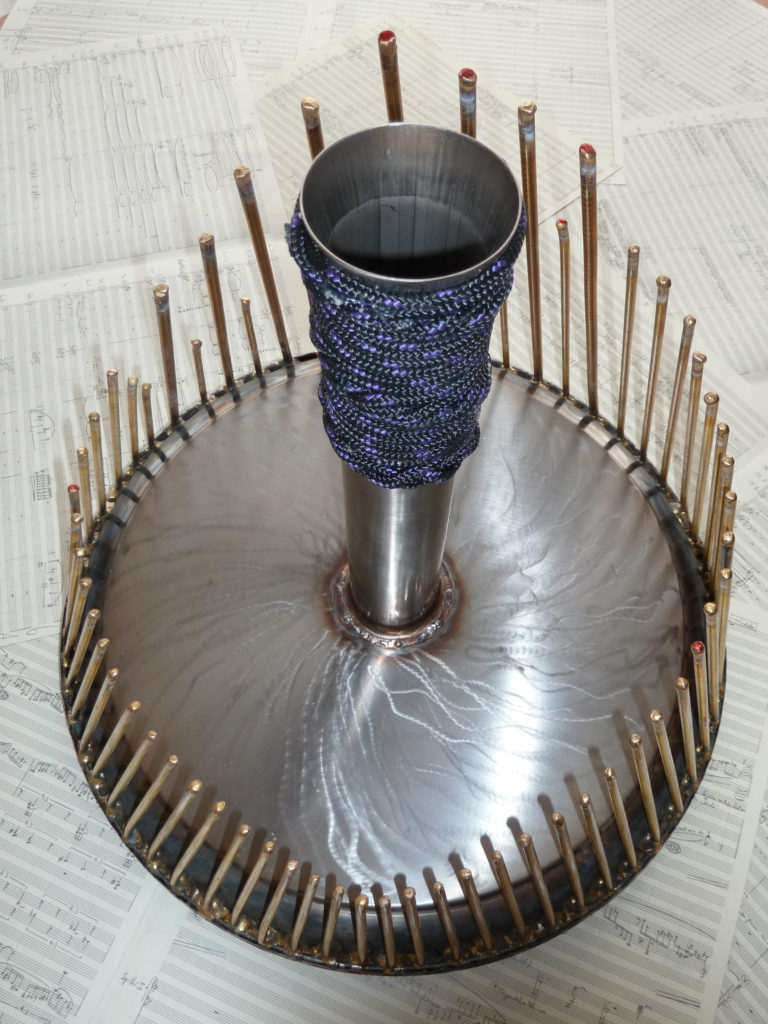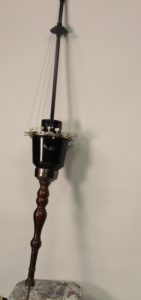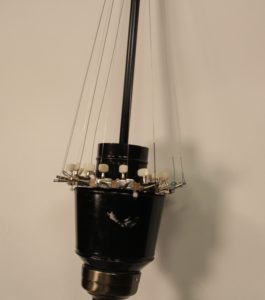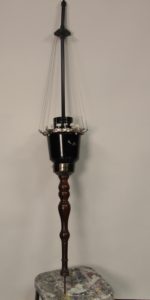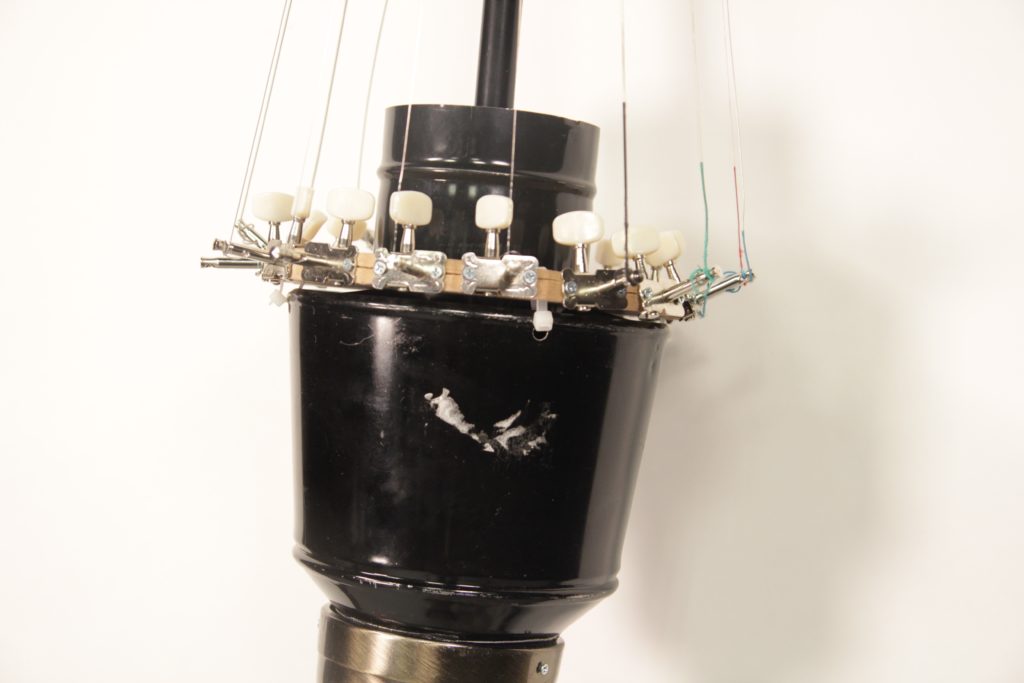Rotary Cello
|
The Rotary Cello is a hybridized instrument that is inspired by three unique instruments: the cello (evidently), the harp and the WaterphoneMegabass (also known as an ocean harp). For those who are not familiar with the Waterphone Megabass, they are known for their eery and complex sound that has blends of high pitched metallic ringing and wet bass. It has been used many times in movies and soundtracks to evoke mystery and suspense If you needed a more thorough understanding of the Waterphone Megabass, below is an image that explains the tonalities and relative length of the rods that produce the tones on the Megabass. Below that image is a picture of an actual Megabass which became one of the core influences in my instrument The Rotary Cello has a couple of core elements that are used to create its sound. The central component is a hollow cylinder encasing a smaller cylinder with a cup on the bottom. The shape resembles a torch encasement where the cup is where they would usually put the flame source. The encasement is made of sheet adonized aluminum which made the casing strong, sound conductive and lightweight. Inside of the inner cylinder, there are stacked laser-cut disks with centering holes to straighten the rod that supports the tension from the strings. There is also a CNC-milled wooden component that houses all 16 of the tuning pegs and it is tied down to the rest of the instrument to help support the tension of the strings. The assembly on the top of the rod that houses the strings is a 3D printed element that has slanted holes to even out the tension in the strings and a handle to spin the instrument to access more strings. At the bottom, there is a combination of a table leg and a part of a fan that was repurposed as a bottom stem and bottom encasing for my instrument. The 16 strings were taken from more established string instruments. The strings are from a combination of strings from the bass guitar, acoustic guitar, cello, violin, and viola. The pure data patch I used in order to create the amplified sound was a simple fuzz generator that gave it a gritty electric guitar sound. For the video, I played it an assortment of ways to demo the instrument’s flexibility of sound. I plucked the strings, bowed them and percussed the body of the instrument. Since the sound is well-insulated, I was able to amplify the sound to create a sort of drum/percussive element with the central component, handle and center rod. The sound is routed to a mixed using a KORG clip-on contact mic on the center rod. |


